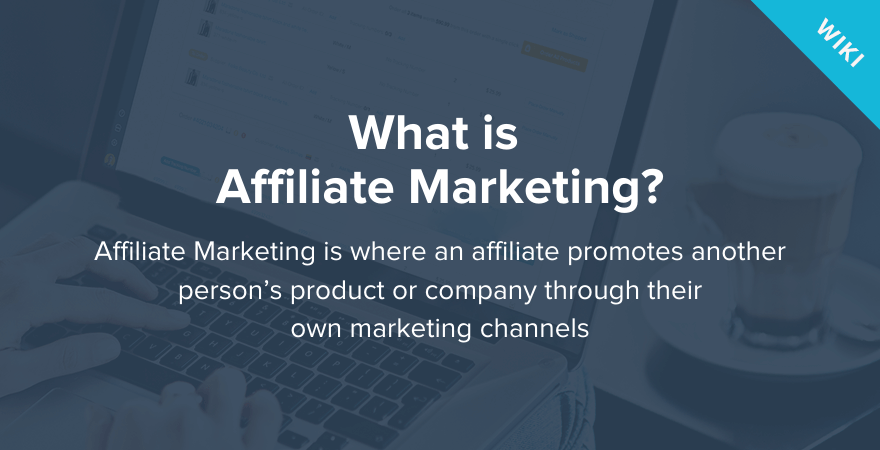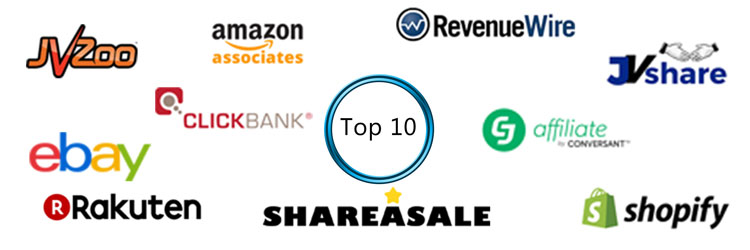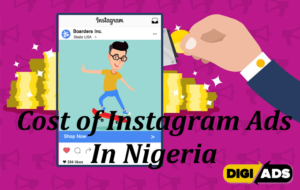Are you considering launching an Instagram affiliate marketing network for your company?
With over 1 billion active users on Instagram, running an affiliate program and partnering with influencers could help you reach a huge and highly profitable audience.
Affiliate marketing is a popular way to grow brand awareness and revenue. However, as online marketing continues to shift toward social media, overlooking these platforms could mean missed opportunities to find quality affiliates.
In this blog post, we’re explaining what affiliate marketing is, how to get started as a brand or business, and how you can use an affiliate program to fast-track your growth and success!
Table of Contents
What is Affiliate Marketing?
Affiliate marketing is a system that allows influencers to promote a brand’s products or services and earn a commission from the clicks or sales they generate.
It typically involves four main players: the brand, the affiliate network, influencers (also known as the affiliate marketer), and the customer.
You may have seen affiliate marketing appear in the form of unique discount codes, where an influencer shares a code, specific to them, that their followers can use to get discounts from brands.
However, influencers typically use unique, trackable links that are provided by an affiliate network. Thanks to these links, it is possible to track exactly how many clicks and sales are made as a result.
Affiliate links can be added anywhere on Instagram that allows links. Instagram Stories, IGTV descriptions, and Instagram’s link in bio are all affiliate link hotspots for influencers.
More businesses are turning to influencer marketing because of the authenticity it offers. People often follow these affiliates because they admire and respect them, and therefore value their opinions and suggestions.
When a sale is made from an affiliate link, the influencer typically earns a set rate commission amount of the total sale value. This rate can vary depending on the individual brand but typically ranges between 10%-20%.
Affiliate links can be shared on Facebook, YouTube video descriptions, TikTok, Twitter, and even on influencers’ websites — essentially anywhere on the web where a link can live.
Today, though, we’ll focus on Instagram affiliate marketing. This is why:
- Instagram supports all of the major affiliate networks and programs used to monetise social media (such as ShareASale, CJ Affiliate, Pepperjam, Rakuten, and AWIN).
- To exhibit and sell things, Instagram provides both image and video features.
- Instagram is a free and powerful tool for generating leads and converting followers into clients.
Benefits of Affiliate Marketing?
There are tons of benefits that brands and businesses can gain from affiliate marketing on Instagram!
To start, affiliate marketing is a fast-track way to reach more potential customers. There are thousands, if not millions, of influencers you can partner with — each with its own niches, curated communities, and platforms!
In a nutshell, partnering with them through affiliate marketing will help you reach more people at a faster rate.
Consider this: if you only conducted a campaign on your own social network, you’d likely only reach your own followers. Working with influencers to execute your campaign on their social media, on the other hand, gives you access to all of their audiences.
Another major benefit of affiliate marketing is that it’s more organic.
When an Instagram user sees a product or service posted by a brand, it’s understood the brand is trying to sell something. When they see an influencer (or any content creator) vouch for a product, the recommendation is perceived as much more genuine and authentic.
In fact, 90% of shoppers are influenced to make a purchase by user-generated content.
So, the brand being promoted sees increases in customer interest and brand loyalty, and the influencer earns a percentage of any sales they drive by sharing their honest recommendations. It’s a win-win!
Looking for more inspiration to successfully monetize your Instagram account? Check out our recent blog post: New Features for Instagram Creators to Make Money!
How to Set Up an Affiliate Marketing Program on Instagram
If you’re new to the world of affiliate marketing, the good news is that it’s really easy to get started.
Step 1: Pick an Affiliate Network
If you’re actively looking for affiliate marketers (i.e. influencers) to partner with for the first time, the easiest route to follow is to use an affiliate network!
Affiliate networks will give you services and benefits like tracking technology, reporting tools, payment processing, along with exposure to a base of influencers who already use affiliate links on their platforms.
Here are a few of the main affiliate networks to choose from:
The tracking technology bit is especially important, as affiliate networks provide trackable links that influencers can use to track clicks and sales.
Affiliate networks can also help you figure out the amount of commission an influencer is due, and what type of commission structure works best.
There are two main types of commission models: pay per click and cost per acquisition.
A pay-per-click model means that you’ll earn a small amount for every click that you drive to a website, while cost per acquisition only pays when an actual sale is made.
If you’re just starting out, a cost-per-click model may not be the safest route for your business. A cost per acquisition model is much lower risk as it’s based on actual sales performance, and can motivate influencers to focus on sales rather than traffic.
Once you’re set up on an affiliate network, you can further boost your exposure by joining monetization platforms like rewardStyle or ShopStyle. But just note, you must first join one of the above affiliate networks first!
Step 2: Set Your Commission Rates
Now it’s time to map out your commission rates, which basically means how much you’ll pay an influencer for each sale they drive.
There are a lot of different ways you can do this. Here are a few ideas:
- Analyze Your Profit Margins: Commission payments ultimately come out of your profit margin, so understanding how much profit you are willing to trade for a higher volume of sales is essential.
- Conduct Competitor Analysis: How much commission do your competitors pay out? What is the industry standard?
- Ask Your Affiliate Network: Affiliate networks have tons of experience and are likely to provide you with a wealth of information!
Once you’ve decided your commission rate, you’ll also need to set your payment terms. This is usually 60-90 days to allow for returns or exchanges but will depend on your individual sales cycle.
Step 3: Create a Compelling Affiliate Program
When building out your affiliate program, make sure it’s one that influencers actually want to participate in.
One way to incentivize influencers is to build a tiered program, with the option to unlock extra rewards. This can really motivate influencers to promote your brands and services, and fairly rewards them for the effort they put in.
This could be as simple as a higher commission rate for a higher volume of sales, or a one-off bonus payment!
Step 4: Find Influencers to Partner with on Instagram
There are so many ways you can go about finding influencer affiliates to partner with on Instagram!
Depending on your Instagram marketing goals, you may want to strategically hand-pick influencers to get the most from your affiliate campaigns. We recommend reading our article on 6 Questions To Ask Before Working With An Influencer for tips on:
- How Instagram influencer marketing works
- Tips on finding the right influencers for your business or campaign
Remember that the quality of influencer affiliates far outweighs the quantity. Don’t stress about having a ton of influencer affiliates posting about your brand — just make sure the ones you do pick are serving as strong voices for your product and are effectively driving sales.
TIP: When setting up your influencer affiliates with your program, be sure to send over some sort of brand guidelines and resources to help with their affiliate content creation!
Step #4: Analyze and Adjust
Once your affiliate program is up and running, it’s important to keep track of what’s working for your brand.
If you’re using an affiliate network, they should have detailed reporting available that will show you how many affiliate links have been generated for your brand, how many clicks they’ve driven, and also the total sales value.
Bonus Step: Seek Out Affiliates Who Also Have a Website or Blog
Many social media influencers use affiliate marketing as a passive income. While that’s entirely okay, they may not be as motivated as those who promote products as their primary source of income.
This is why we recommend looking for influencers who also have an affiliate blog or website. These publishers are likely experienced with promoting brands already. Plus, a site paired with Instagram content means multiple channels for spreading awareness of your products.
When you’re researching Instagram influencers, take notice of their bios and, more specifically, what links they use. Note if they include a website address.
If you visit their website, check to see if they have a blog. Exploring their posts can give you a feel for their content style, as well as the methods they use to incorporate affiliate links.
This can help further narrow your search by revealing which influencers are well-versed in affiliate promotions. It’s also an effective way to determine whether their content and audience align with your goals.
Conclusion
Getting started with affiliate marketing can feel a bit overwhelming at first. However, it can become significantly easier (and successful) when you have the right platform and affiliates on your side.
Whatever your product or service, affiliate marketing can help boost your brand awareness and drive sales — and it can also be a great way to incentivize influencers to start talking about your brand more online!






